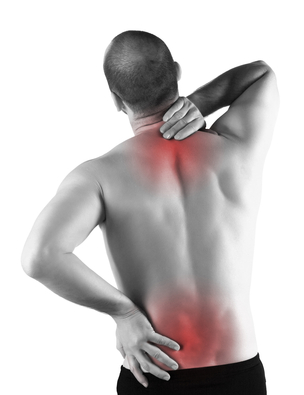I Have A Bad Back: Do I Need Surgery?
 People with back pain often have long-standing problems that have plagued them for many years. Neurosurgical consultants who have specialized training in the diseases and disorders of the bones and spine have a variety of treatments for these problems. Non-surgical treatment may allow you to avoid surgery for many years. If surgery is necessary, modern techniques can bring relief of pain and full mobility.
People with back pain often have long-standing problems that have plagued them for many years. Neurosurgical consultants who have specialized training in the diseases and disorders of the bones and spine have a variety of treatments for these problems. Non-surgical treatment may allow you to avoid surgery for many years. If surgery is necessary, modern techniques can bring relief of pain and full mobility.
Diagnosing Back Pain Problems
Many patients have sudden back pain from overusing back muscles. If not properly treated, the pain can become a chronic problem. To diagnose the source of the problem, the doctor generally orders a spinal x-ray, electromyogram to determine nerve function and MRI to see what’s going on inside the structures of the back. A physical examination and medical history can tell the physician about the general health of the patient and any contributing factors.
Non-Surgical Treatments For Bad Backs
Rest and NSAIDs medications like aspirin, ibuprofen, Tylenol and naproxen are the first line of treatment against back pain. However, too much rest can increase back problems. Exercise helps to strengthen back and abdominal muscles that support the back. Gentle stretching exercises, yoga and other methods can often help to reduce pain and stiffness. Physical therapy treatments can provide relief from pain and increased mobility. Heat and cold packs may be used, as well as nerve stimulation, ultrasounds healing and steroid delivery through the skin. Injection of anti-inflammatory medications into the spine can help to relieve pain for several months.
Alternative Treatments
For chronic pain and weakness, chiropractic manipulation can be helpful in relieving the pressure on muscles and nerves in addition to traditional treatment. Acupuncture, an ancient Chinese method of inserting thin needles into nerve pathways of the body, can help to block the sensation of pain for temporary relief. Massage is another method that can increase circulation to the back, relieve pressure and relax the muscles and nerves.
Surgery
If these non-surgical therapies are not effective for relief of pain and improved mobility, minimally invasive surgery may be necessary. Problems such as sciatica, herniated disc and fracture of the vertebrae are often helped by surgery. Surgery can also be helpful in cases of spinal stenosis, in which the channel through which nerves pass become narrowed. It can also help people with degenerative disc disease in the lower back, which can cause chronic pain with aging. Spondylolisthesis, a condition in which the vertebrae of the lower spine slip out of position can also be improved with surgery.
With the wide range of treatments available, most people can find relief for their back problems in time. Surgery is not always necessary, but it can be a good option for patients whose pain continues when conventional methods fail.